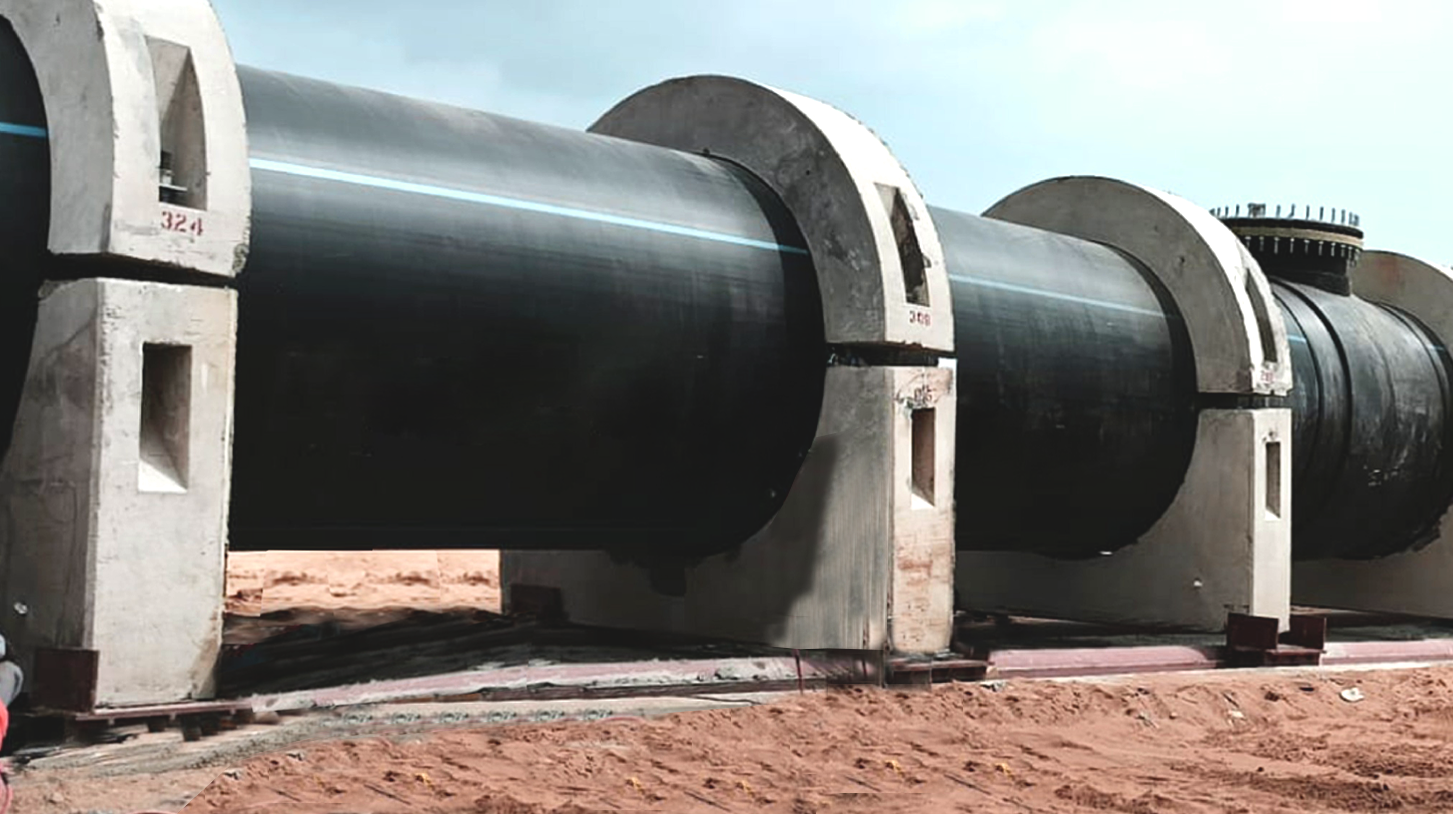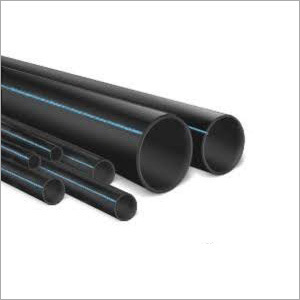The Advancement of American Plastics HDPE Pipe Manufacturing: What You Need to Know
Wiki Article
The Crucial Actions for Successful Installment of HDPE Pipeline in Your Next Project
Effective installation of HDPE pipeline needs careful planning and implementation. Secret actions include assessing project requirements, preparing the website, and picking proper joining methods. Each phase plays a critical role in ensuring the honesty and performance of the pipe. Recognizing these necessary actions can greatly affect the overall success of the task - Midland TX HDPE Pipe Fittings in Stock. Nevertheless, the nuances of each action may hold the secret to conquering common obstacles faced throughout setupUnderstanding the Benefits of HDPE Pipeline
High-density polyethylene (HDPE) pipeline provides countless benefits that make it a favored option for different applications. Its high resistance to deterioration and chemicals guarantees toughness sought after environments, substantially expanding the life expectancy of setups. Furthermore, HDPE's adaptability allows for less complicated setup, particularly in difficult surfaces, as it can flex without breaking. The light-weight nature of HDPE pipe simplifies transportation and handling, decreasing labor costs during installation.HDPE pipe is understood for its reduced friction coefficient, which enhances fluid circulation and reduces power consumption. Its smooth building decreases the danger of leakages, contributing to far better resource monitoring and ecological defense. Additionally, HDPE is recyclable, lining up with lasting practices and lowering ecological effect. Generally, the mix of toughness, adaptability, and eco-friendliness makes HDPE pipeline an exceptional choice for a wide array of jobs, from water circulation to industrial applications.
Planning Your HDPE Pipe Setup
When planning a setup of HDPE pipe, mindful factor to consider of several vital elements is essential to safeguard a successful task. First, task managers need to assess the details requirements of the pipe, including the meant usage, flow rates, and ecological conditions. Comprehending these criteria will certainly guide the option of proper pipeline dimensions and material grade.Next off, timelines should be established, factoring in purchase schedules and any type of possible hold-ups. Coordination with local authorities for licenses and governing conformity is also necessary. In addition, a detailed budget plan must be prepared, incorporating all costs related to materials, labor, and equipment.
It is essential to engage a qualified team experienced in HDPE pipe installation. Their experience will certainly help mitigate risks, guarantee adherence to industry requirements, and eventually add to the job's success. Complete preparation lays the foundation for a smooth installation process and long-lasting efficiency of the HDPE piping system.
Preparing the Website for Setup
Proper site preparation is necessary for the effective installation of HDPE pipeline. Prior to setup begins, the site has to be completely evaluated to assure it meets all necessary needs. This consists of surveying the ground for existing frameworks, utilities, and potential hazards that can hinder the installation procedure.

Proper altitude and positioning must be established to maintain a constant gradient for water drainage functions. Appropriate water drainage around the installment website is likewise necessary to stop water buildup, which can cause issues down the line.
Methods for Joining HDPE Water Lines
Accomplishing a reputable link in between HDPE pipelines is necessary for guaranteeing the honesty and durability of the installment. Numerous methods exist for signing up with these pipes, each fit for different job requirements. Blend welding is among one of the most common techniques, making use of heat to bond the pipeline finishes with each other, developing a seamless and long lasting connection. This strategy can be additional classified right into socket combination and butt fusion, depending upon the pipeline configurations.Mechanical fittings are an additional alternative, utilizing clamps and threaded adapters to join sections of HDPE pipe. While normally faster to mount, they may call for additional maintenance in time. Electrofusion is a customized approach that entails using electrical current to warm and fuse the pipes with specifically made installations, making sure a solid bond. Picking the appropriate joining technique is vital, as it directly affects the general performance and dependability of the HDPE piping system in the designated application.
Checking and Examination of Installed Pipeline
The screening and examination of mounted HDPE pipelines are crucial to ensuring their functionality and long life. This procedure incorporates aesthetic assessment methods, pressure testing methods, and leakage discovery procedures to recognize possible problems. By employing these methods, specialists can validate the integrity of the installation prior to it is put into usage.Aesthetic Evaluation Techniques
Utilizing efficient visual examination methods is important for assuring the stability of set up HDPE pipelines. Assessors need to methodically examine all noticeable areas of the pipeline to recognize any kind of indicators of damages, misalignment, or incorrect installation. Trick indicators to analyze consist of joint stability, surface abnormalities, and links. Examiners might use tools such as multiplying glasses or electronic cameras to improve visibility and detail. It is necessary to look for indications of ecological anxiety, such as buckling Midland TX HDPE Pipe Fittings in Stock or too much bending, which might jeopardize efficiency. Consistent paperwork of searchings for enables for tracking modifications over time and aids guide required repair work. By adhering to well-known visual assessment methods, project teams can significantly reduce the danger of future failings and assure long-term dependability of the piping system.Pressure Checking Techniques
Aesthetic evaluation works as a preliminary procedure, yet it is not sufficient on its very own to assure the performance of installed HDPE pipes. Pressure testing techniques are essential for making sure the honesty of these systems. Typically, hydrostatic testing is employed, where the pipes are filled up with water and based on stress degrees above the designated operating pressure. This technique aids recognize weak points or potential leakages. Pneumatically-driven screening can also be utilized, although it brings greater risks due to the compressibility of air. No matter the approach chosen, sticking to sector requirements and security procedures is essential. After performing pressure examinations, thorough documentation is necessary to validate the results and confirm that the installation meets all functional requirements before continuing to the next stage of the project.
Leak Discovery Procedures
How can one assure that mounted HDPE pipes are cost-free from leaks? Efficient leakage detection treatments are crucial to protect the honesty of the system. Originally, visual examinations should be performed, searching for signs of water build-up or soil disintegration around pipe joints. Following this, pressure testing can verify the system's stamina. A typical method is the hydrostatic examination, where water is presented under stress, keeping an eye on for decreases that show prospective leakages. Additionally, progressed innovations, such as acoustic sensing units or infrared thermography, can detect leakages that might not be visible. Regular tracking and maintenance further add to the longevity of HDPE pipelines, ensuring they continue to be leak-free throughout their functional life-span. Correct paperwork of these treatments is important for compliance and future recommendation.Upkeep Tips for Long-Term Efficiency
To guarantee the long life of HDPE pipes, developing a regular examination schedule is essential. This aggressive method permits for the very early detection of potential problems, decreasing costly fixings. Additionally, implementing appropriate cleansing methods will aid preserve peak performance and protect against buildup that can influence capability.Regular Inspection Schedule
Although HDPE pipes are known for their longevity and resistance to deterioration, establishing a regular evaluation timetable is important for guaranteeing their long-term performance. Routine examinations aid determine prospective problems such as leakages, joint integrity, and ecological influences that may affect the pipe's performance. It is suggested that assessments take place a minimum of biannually, or extra frequently in settings with severe problems. Texas hdpe pipe manufacturer. Throughout these assessments, aesthetic checks need to be performed to detect indicators of wear or damages. Furthermore, using modern technology such as ultrasonic testing can provide further insights into the pipeline's condition. By implementing a structured inspection schedule, project supervisors can proactively attend to issues, thus prolonging the lifespan of HDPE pipelines and keeping system performanceAppropriate Cleansing Techniques
Correct cleansing strategies play a vital duty in preserving the lasting performance of HDPE pipes. Regular cleaning prevents the build-up of particles, sediment, and biofilm, which can result in obstructions and reduced flow efficiency. Operators should employ approaches such as high-pressure water jetting or foam cleansing to effectively remove contaminants without damaging the pipeline surface area. It is vital to prevent utilizing extreme chemicals that may degrade HDPE product. Additionally, scheduled upkeep checks must include visual assessments for any kind of indicators of wear or damage. Effectively trained personnel ought to accomplish these cleansing procedures, ensuring conformity with safety and environmental regulations. By carrying out these techniques, the life expectancy of HDPE pipelines can be significantly prolonged, ensuring excellent efficiency throughout their operational life.Often Asked Questions
What Are the Ecological Impacts of HDPE Pipeline Production?
The environmental influences of HDPE pipeline manufacturing include greenhouse gas exhausts, power usage throughout production, potential plastic contamination, and obstacles in reusing. However, HDPE's longevity and resistance to rust can alleviate some environmental problems.How Does HDPE Pipe Contrast to Other Products?

What Tools Are Essential for HDPE Pipe Installment?
Vital devices for HDPE pipe installation consist of a blend device, pipeline cutters, shovels, gauging tape, and safety and security equipment. Proper tools assurances reliable, risk-free handling and setup, adding to the task's total success and integrity.Exist Any Kind Of Certain Rules for HDPE Pipe Installation?
Particular policies for HDPE pipe installment differ by region, commonly governed by neighborhood, state, or federal codes. Conformity with these laws assurances safety and security, environmental management, and performance, making adherence important for effective job end results.Can HDPE Piping Be Recycled After Use?
Yes, HDPE pipes can be recycled after usage. Their thermoplastic nature enables reprocessing, making them appropriate for reusing right into brand-new products. This sustainability element contributes to ecological conservation and advertises round economy practices in building.Report this wiki page